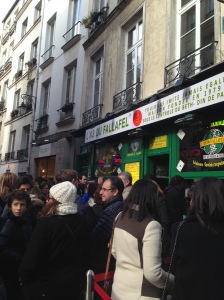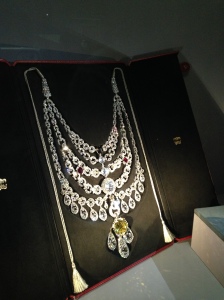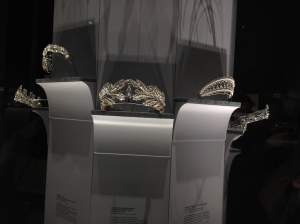At 5pm sharp, Friday 25 July, the school bell at Picaflor rang. The kids made their way out of the massive green doors and we quickly followed suit. Picaflor House is the name of the after-school activities centre that our DUCK team spent 3 weeks volunteering at. Every day after lunch, we would head over to Oropesa and teach English, Art & Craft, IT to kids who have nowhere else to go when their school day finishes. That Friday was special because it was the start of a very long weekend. To celebrate the Peruvian Independence Day on Monday 28 July, the nation was entitled to a break till Wednesday. Ourselves included.
We went back to our hostel in Cusco to pick up our bags and made our way to our 8pm Arequipa-bound bus. Just as we were about to go on board, the routine passport and ticket checks were in order. What took me by surprise was the video camera. It was held right in front of my face by the casually dressed Peruvian security personnel. He then moved on to my friend standing behind me. Following this episode of slight intrusion, I also had my fingerprint recorded on a piece of paper. I guess it was a good thing that such stringent security measures were carried out. I just wasn’t expecting it.
This was not our first overnight bus journey. The 10-hour bus ride ahead was nothing compared to our 22-hour Cruz del Sur journey from Lima to Cusco the day we landed Peru. I went to find my seat on the bus. I was right at the front but there wasn’t much scenery to admire because it was pitch black outside. I took out my sleeping bag and made myself comfortable in my little cocoon. Before I knew it, the bus pulled up at Arequipa bus station. It was 5am and we needed to catch another bus to Chivay, the town next to Colca Canyon. Being the large, visible group of gringos that we were, we strolled into the bus terminal, found a decent spot on the floor and squatted there for a good two hours before boarding our next bus. Meanwhile, desperate saleswomen from each bus company took turns to ululate the hottest deals and routes from ‘A-re-qui-pa…A-re-qui-pa…’ to ‘Li-ma…Li-ma…’ or to ‘I-ca…I-ca’! It was entertaining at first but the two hour symphony was something else… This was merely a warm-up for a horrid onward journey to Chivay.
As soon as I got on the bus, I realized it would not be a fun bus ride. Having checked out the seat number printed on my ticket, I made my way down the aisle to the very last row. Fortunately, I was sandwiched between two members of the DUCK team. What bothered me was the toilet, located immediately to our right. To make things even worse, there was no ventilation on the bus, let alone A.C.. I tried to force myself to sleep but I could hardly breathe. My nose was blocked (which was probably a good thing given my proximity to a nasty mix of human excretion). It got warmer as we got closer to Chivay. But it also meant the closer I got to suffocation.
It doesn’t take a genius to deduce that I was relieved to hop off the bus after the four-hour ordeal. With bags on our backs again, we marched into our hostel. Half an hour after we dropped off our bags, we were already zip-lining across the Colca Canyon! I must admit I am quite a thrill-seeker. On the second run, I went upside down and admired the valley beneath me as I whizzed from one cliff to another. Having ticked that off the list, we headed back to our hostel and rested a little during dinner.
Our next engagement was scheduled for 8pm. I was exhausted. However, overwhelmed by a fear of missing out (FOMO), I dragged my tired soul to the planetarium. How could one possibly say no to star-gazing? The French expert guided us through the different constellations inside a dome-shaped building. (Of course, I didn’t let this precious opportunity to practise my French slip by!) We went out into the open to see them for ourselves and then took turns to have a peek through the telescope. Seeing Saturn and Libra for myself was a riveting experience. Being situated in the southern hemisphere, the Southern Cross was particularly visible. The planetarium left us on a high and we called it a day.
Sunday came around after a short rest. We did not have the luxury of a lie-in as we had an 8am appointment with the condors at Colca Canyon. After some idle waiting around, they made a grand entrance by flying right above our heads. They casually glided in and out of sight. Most of them bore black feathers with a hint of white on their wings. As we stood patiently at the observation deck, we heard an amalgamation of languages. People from all over the world were represented there. Once we got enough of the condors, we gobbled down a sandwich and embarked on a trek. We commenced from a town called Yanque then ascended up to a place called Uyo Uyo. At this quiet archaeological site, we caught our breath and admired the ruins. We were expecting to hit a path near Uyo Uyo which would take us to the adjacent town. However, we got terribly lost as we searched for this route. In the end, we had to walk down a stream. We were treading on what appeared to be a footpath originally but a river, located nearby, somehow decided to divert its flow into it. Luckily, I had my Gore-Tex boots on. Others were not so lucky. After the clumsy adventure, we were back to where we began the trek… We wrapped up the day with a wholesome meal (quinoa soup and alpaca steak for me) once we returned to Chivay and a noisy cake-cutting ceremony for a birthday girl in our group!
The next day, we got out of bed at 4:30am, packed ourselves into a mini-van and went back to Arequipa. We arrived at around 8:45am. As soon as our feet touched the ground, we were taken aback by the beauty of this Spanish-looking city. With little time on our hands, we immediately began sightseeing. After touring around a couple of cathedrals and the Jesuit cloisters, we paid a visit to the Museo Santuarios Andinos. This was definitely a highlight. The museum is home to the body of Juanita, an Inca girl who was sacrificed about 500 years ago at the summit of Ampato volcano. The Incas believed in mountain Gods hence the location of what we today consider as a cold-blooded murder. Offering oneself to God was considered a huge honour back in the day and the fate of ‘chosen ones’ were often determined at birth. Due to freezing conditions high up in the Andean mountain range, the body was preserved after all these years. Within the museum, a special room blasting with A.C. is dedicated to the exhibition of Juanita’s body. Experiments conducted by scientists reveal that Juanita was subjected to a fast and put to sleep before receiving a blow on her right eyebrow. Albeit slightly gruesome, these were fascinating discoveries!
Before we embarked on yet another bus journey to Puno, we filled our stomachs with a satisfying crêpe at a local crêpe joint. It wasn’t quite the same as those I had sampled in Paris this year but it was enjoyable given the lack of European cuisine we’ve been exposed to lately. The 6-hour bus journey was bearable. I was rather entertained by the choice of film on the bus. It was Ip Man, a famous Chinese martial arts film which I had never watched before. Funnily enough, I had to watch the Spanish-dubbed version!
As soon as we arrived Puno, we caught a couple of taxis and checked into our hostel. The next morning, I hopped into the shower only to discover that it had run out of hot water. This chronic lack of hot water supply in Peru was no longer a surprise to me. I cleaned myself amidst the morning chills and got ready for the boat trip to the Uros Islands in Lake Titicaca, the highest navigable lake in the world (3,812m above sea level). It was a pleasant ride until we realised that a little kid (no more than 10 years of age) was at the captain’s seat throughout… We alit the boat and placed our feet onto one of these bouncy floating islands. The chief of this island instructed his guests to sit in a circular formation and then commenced his welcome speech. After that, we were ushered into different huts by a bunch of tribal women. They gestured to the array of traditional clothing hung up on the rails and dressed up each obliging tourist. Before we left the island, the women entertained us with a couple of songs including Row Row Row Your Boat. It was an interesting rendition. Instead of singing ‘gently down the stream’, it went ‘like your mother’s dream…’ As much as I disliked the show and the pretense that was put on especially for tourists, I am almost certain that they were equally frustrated at us for being on these peaceful islands in the first place. The reality is that tourism is an important source of income for the islanders.
The boat returned to the pier at around 3pm. We walked around Puno and found a nice café to kill a couple of hours before dinner. That evening, many of us decided to give guinea pigs a try. It tasted like a combination of duck and chicken. I wouldn’t say it was the most delicious thing I have ever ingested. I am just proud to tick that off my bucket list! Dinner was rather rushed because we had another bus to catch! This was Tuesday night, time for us to head back to Cusco. We arrived at 5am the next day.
At this point you may be wondering: ‘what’s next?’ Believe it or not, we went straight back to work at Picaflor House that very afternoon. There was no time to be tired on this trip.













